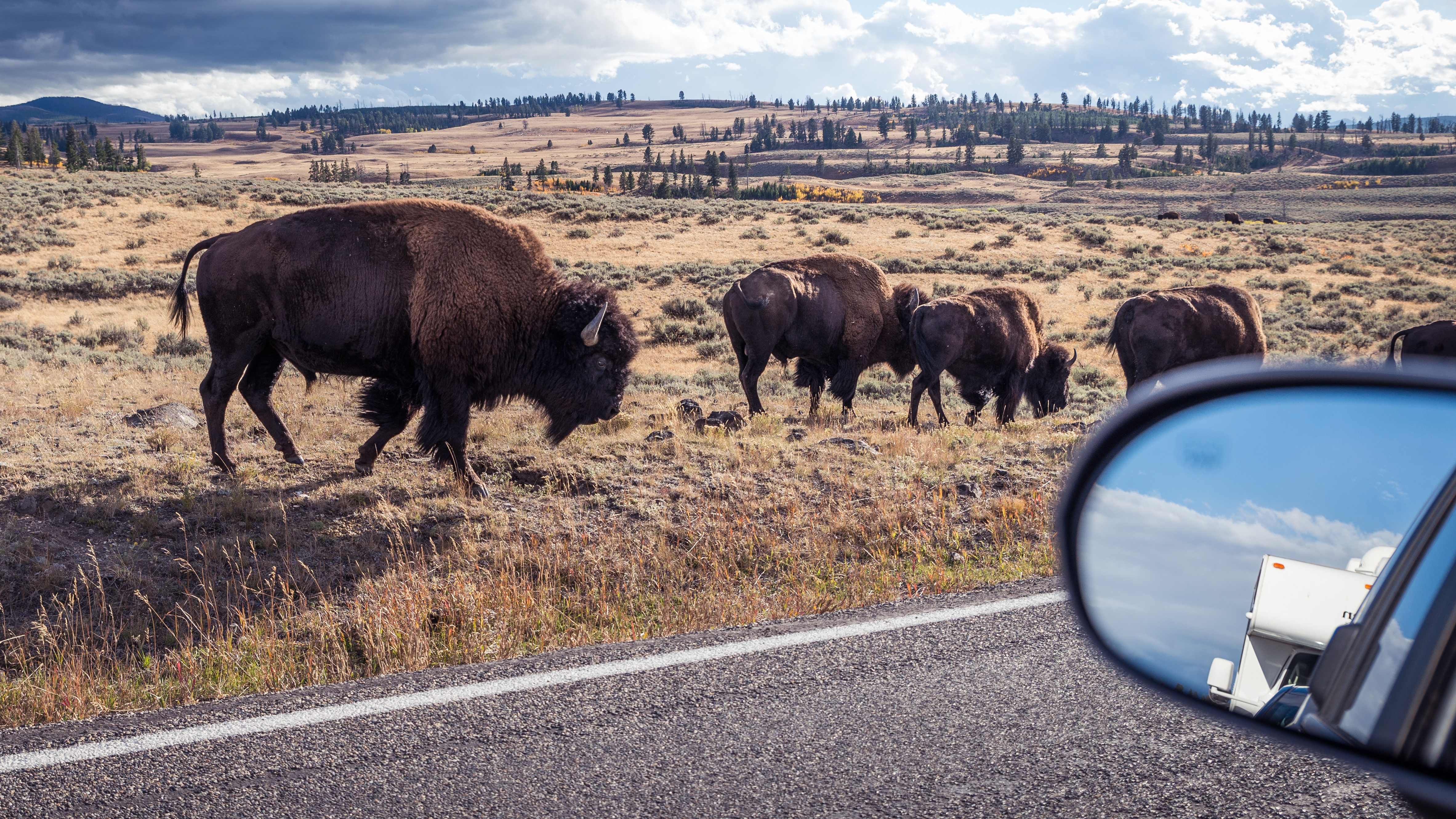
The safest place to watch wildlife is from within your car, as two people visiting Yellowstone National Park learned when one of the local bison speared their car, effortlessly bursting the front right tire.
A video of the incident, which took place during the rutting season when males are particularly unpredictable, has resurfaced this week after being posted on Instagram account TouronsOfYellowstone. The account usually highlights examples of bad behavior at US National Parks, such as visitors chasing bears and dabbling their fingers in thermal pools, but sometimes close encounters with wildlife are just bad luck.
The National Park Service (NPS) asks visitors to always stay at least 25 yards (23 meters) from bison and elk, and for good reason. Recently another visitor suffered damage to their vehicle when they decided to taunt a bull elk, which retaliated by ramming their car and bursting the driver side front tire. Had the guests not been safely inside, the outcome could have been very different.
Bears are the main concern for many people visiting Yellowstone for hiking or camping, but according to the NPS, bison are responsible for more injuries than any other animal at the park. Although they may resemble domestic cattle, they are unpredictable and can run three times faster than humans.
Last summer, three people were gored by bison at Yellowstone within the space of a week, including a woman in her 20s who was thrown 10 meters in the air and suffered a serious puncture wound. Following the incidents, Park Rangers released a poster warning visitors not to pet the 'fluffy cows' – a lighthearted campaign with a serious message behind it.
Keep your distance
If you're not sure how much space to give bison, the NPS recommends holding out your arm, closing one eye, and giving the bison a thumbs-up. If you can completely hide the animal behind your thumb, you're at a safe distance. If not, it's time to back up a little.
If you accidentally find yourself in close quarters, watch out for signs like a raised tail, grunting, and pawing at the ground, all of which are signs that the animal is agitated and likely to charge. For more advice, see our guides how to avoid being gored by a bison and wildlife safety: eight tips for unexpected encounters.
- Best binoculars and monoculars: enjoy watching wildlife from a safe distance







